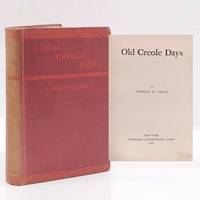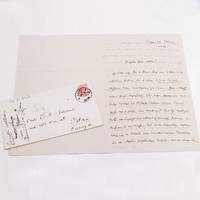Five mounted photographs (including frontispiece) and three folding maps.[2],217pp. 4to
1869 · London
by (Colorado) Blackmore, William
London: Sampson Low, Son, and Marston, 1869. Five mounted photographs (including frontispiece) and three folding maps.[2],217pp. 4to. Publisher's green cloth, lettered in gilt, a bit warped and worn. Some fading to the images as usual, dampstaining largely in the upper margins of the mounts, a few folds on maps beginning to split, small tear to gutter of each, reinforced with tape. Bookplate and ownership ink stamp on front pastedown, pencil annotations on rear endpaper. Five mounted photographs (including frontispiece) and three folding maps.[2],217pp. 4to. First trade edition of this elaborate promotional encouraging immigration to Colorado, boasting (truncated)






